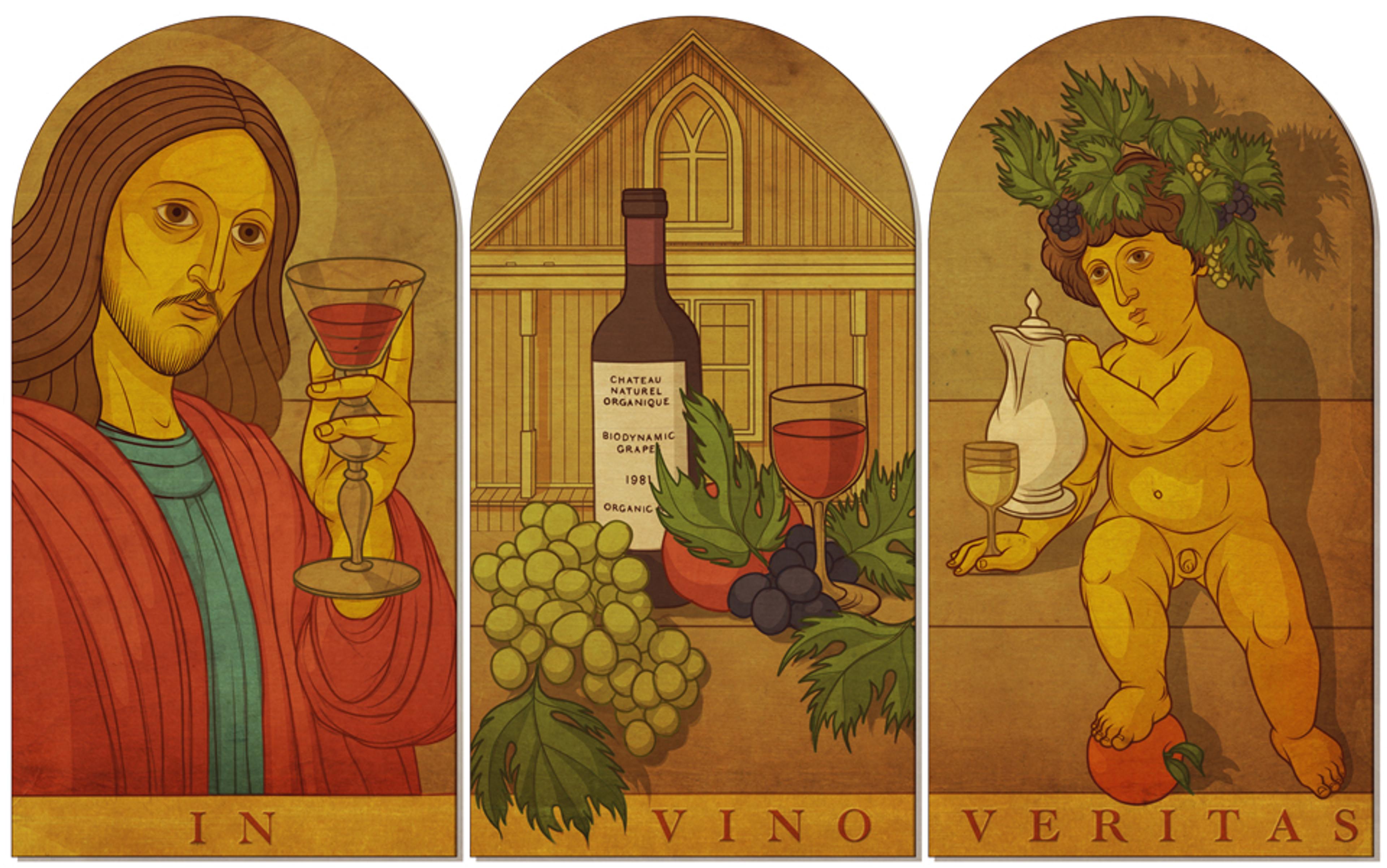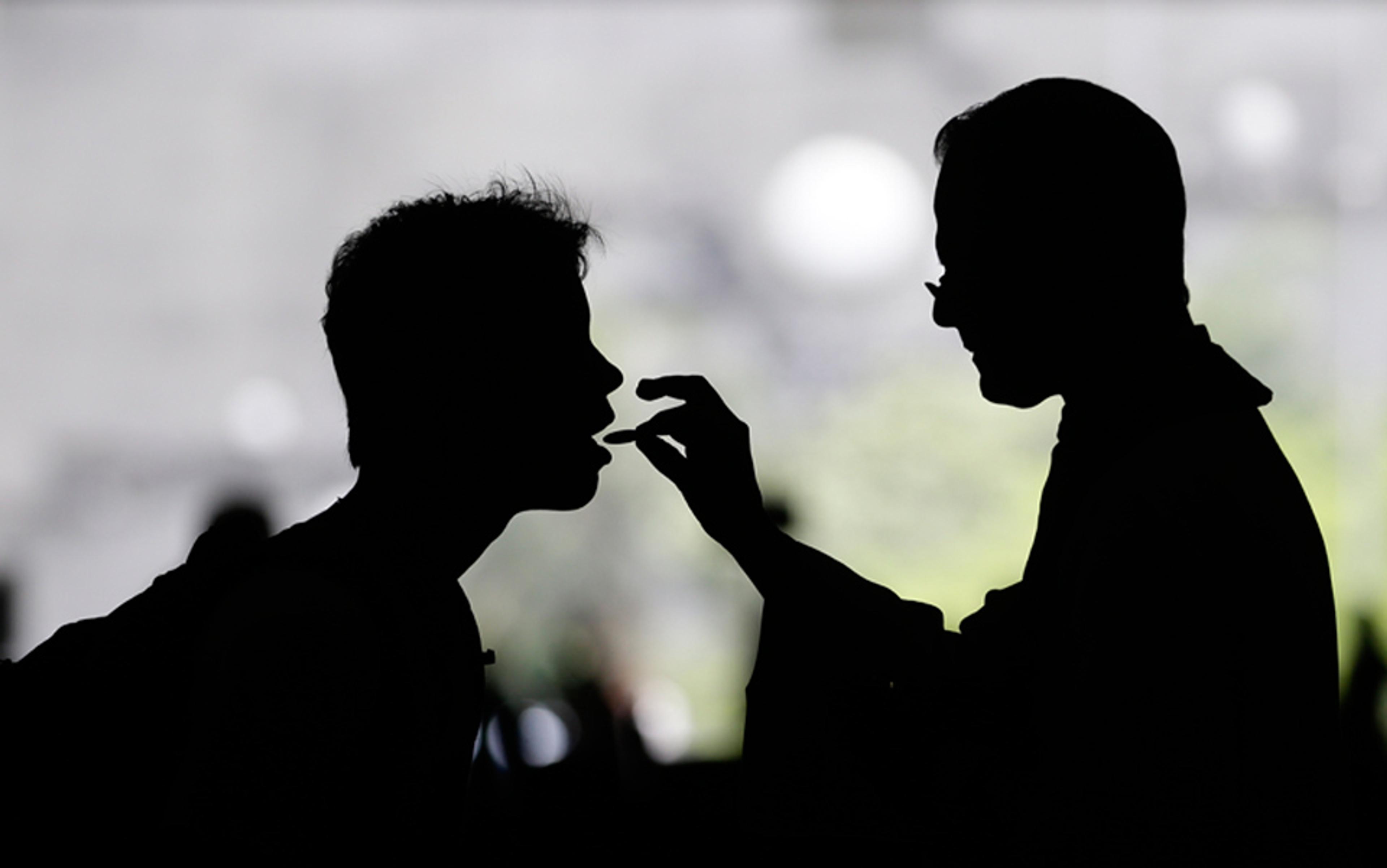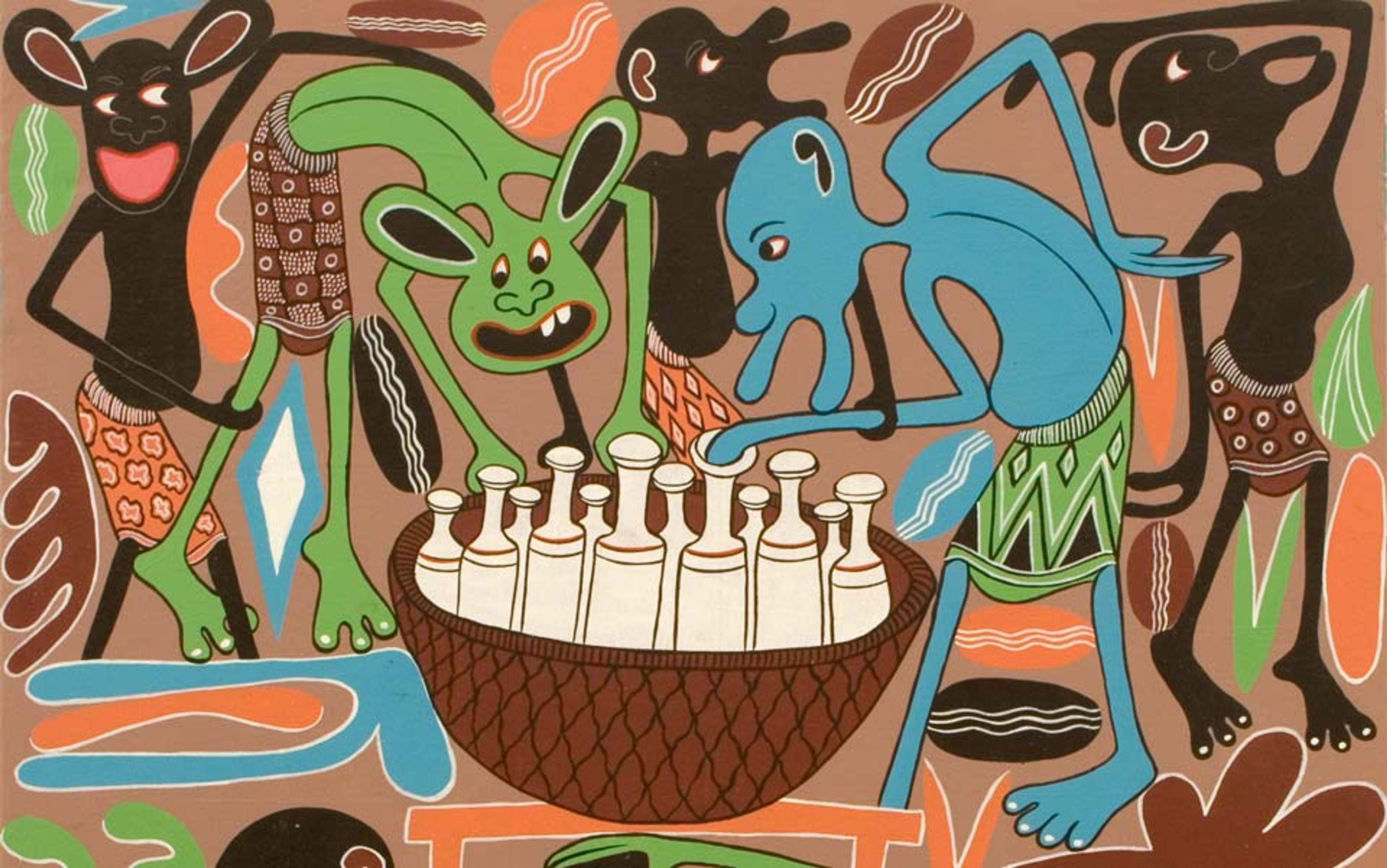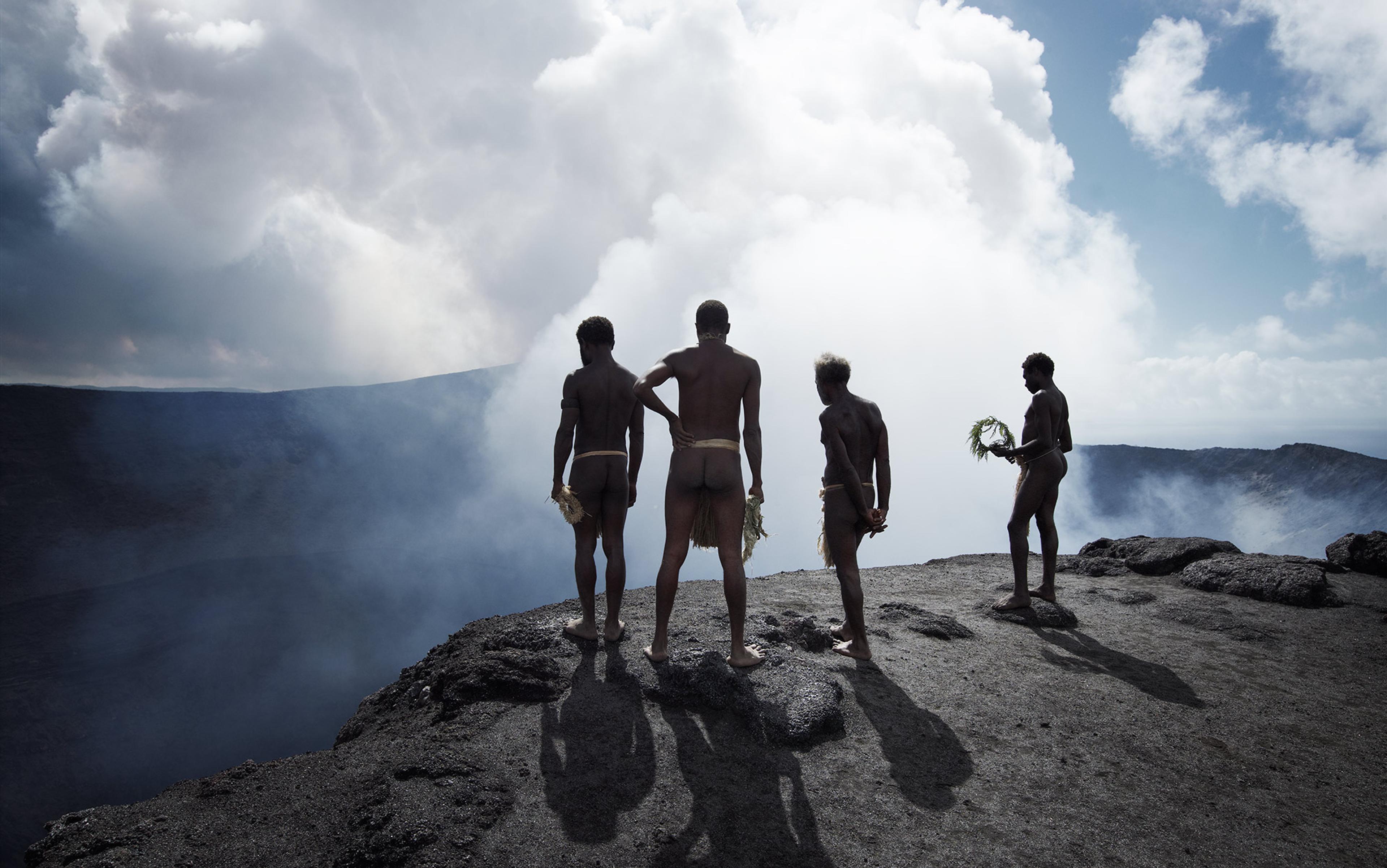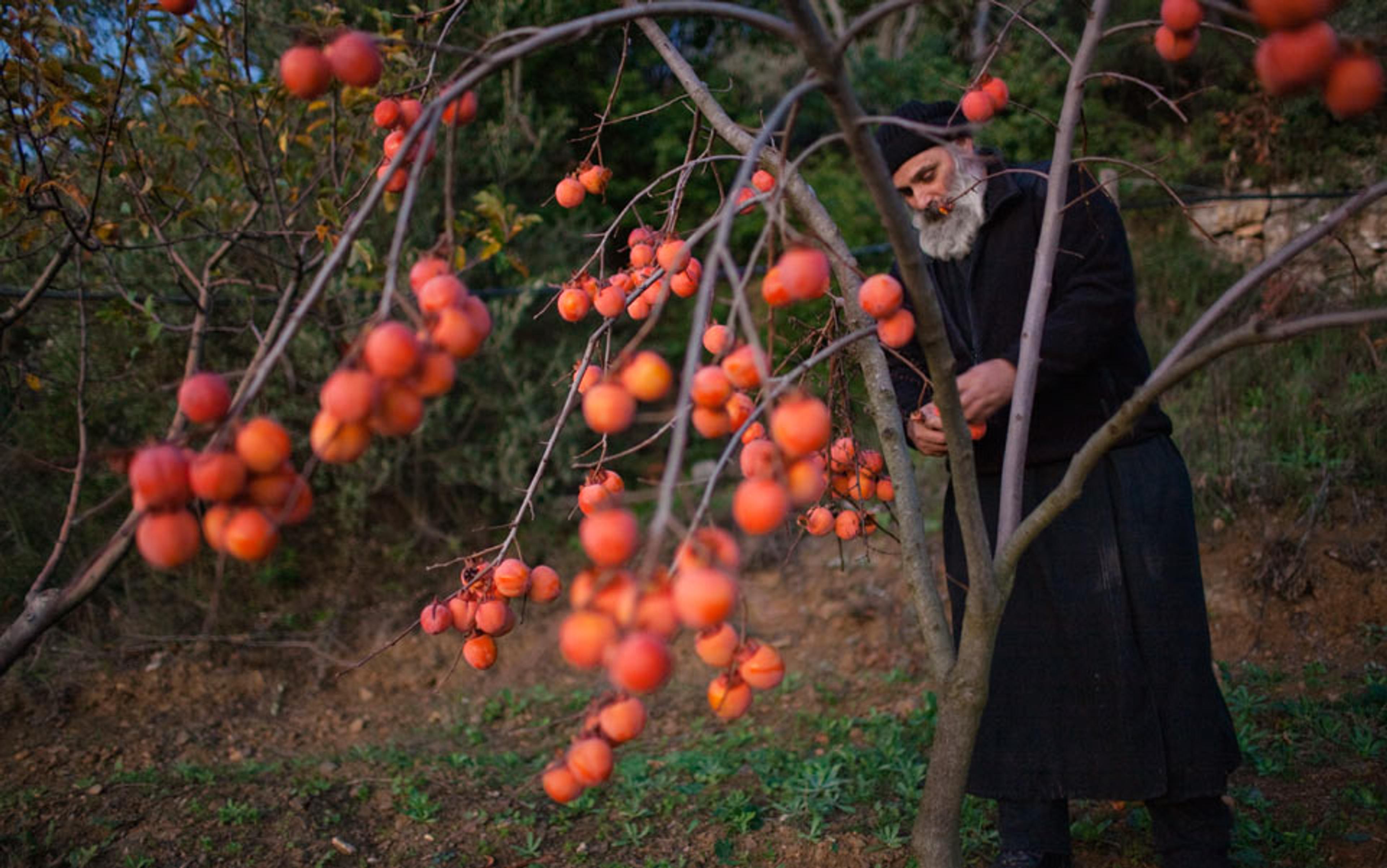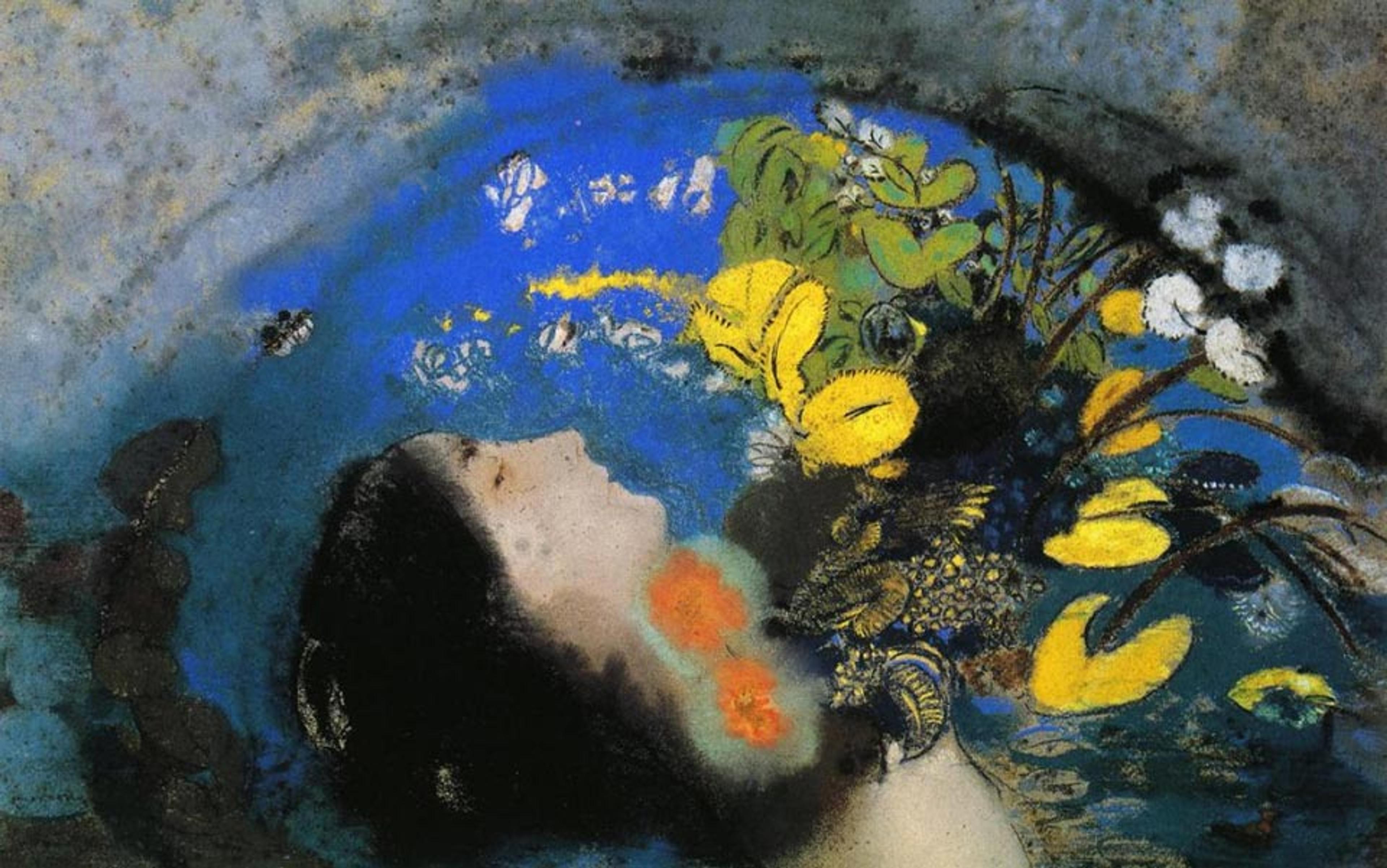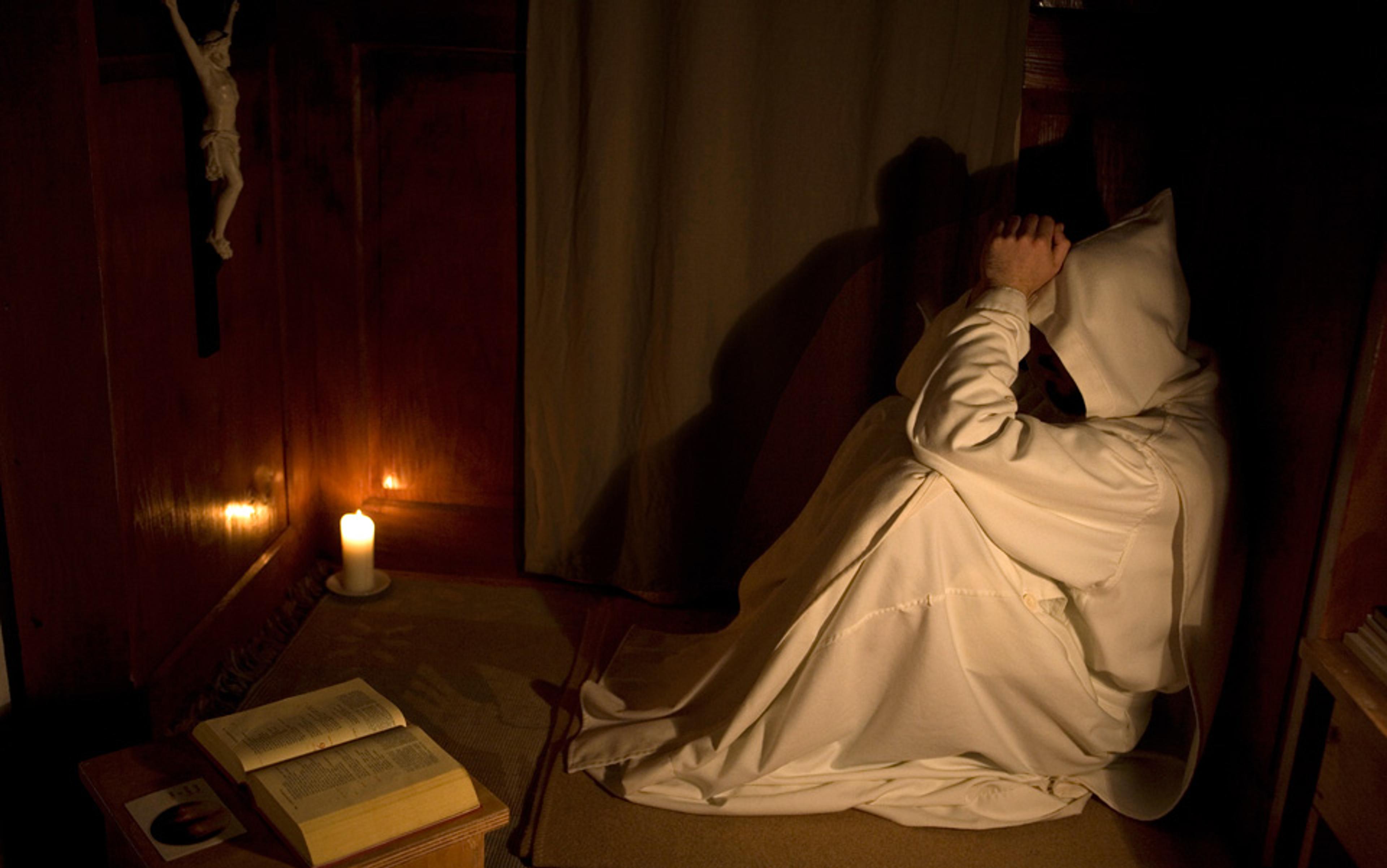I should start by saying that I’m not a wine critic. I can be counted on to keep a few bottles on hand, but I don’t have a cellar or a special refrigerator, or different glasses for whites and reds. I know the sensory sequence of wine tasting – I don’t slug the stuff back like a shot of tequila. I make my wine into a stained-glass window, by holding it up to the light. I inspect its colour, swirl it around, and dunk my nose in for a deep inhale. And when the rush of taste comes, I do my best to break it up into its constituent elements. But I have always been turned off by wine snobs. It’s a crude litmus test, but if you can’t stomach a glass of Trader Joe’s finest, you’re probably not my people.
I used to be a regular at a wine bar in San Clemente, a beach town in California where my wife and I lived when we were first married. The ‘Tuscan’ decor of the place was a little too vivid for my taste, but the wine was priced right and the owner was a great conversationalist. He would tell us stories from behind the bar about his travels to vineyards in Chile and New Zealand, and he had a charming populist streak. When people got too pretentious about the wine, he would roll his eyes and say: ‘Relax, it’s just a beverage.’
He was wrong about that, of course. Since its invention more than 8,000 years ago, wine has always been more than just a beverage. The oldest winemakers we know of lived in Eastern Georgia, a storied place in the history of our species. Eastern Georgia is home to the oldest European hominid remains, a group of 1.8 million-year-old skulls. The skulls were dug up at Dmanisi, a site that sits halfway between the Black and Caspian seas, on the strip of land that connects the Middle East to Eurasia. They tell us that Eastern Georgia was one of the first rest stops in the great human epic, the 2 million-year march that brought humanity out of Africa, and to the far corners of planet Earth.
Much later, after shaking off its ice age glaciers, Eastern Georgia became one of the first landscapes to turn humans into farmers, impressing its fertility on the mind. In 2002, a team of archaeologists dug up a pottery fragment at a Neolithic site called Shulaveri, just 30 miles east of the Dmanisi skulls. The shard of hardened clay bore biochemical wine stains, telling us that Shulaveri was one of agriculture’s first Edens, and that it was home to Vitis vinifera, a vine that snakes its way across trees and trellises, proffering dense clusters of a truly wondrous fruit.
The origins of viticulture are somewhat mysterious. We find references to wine in our most ancient work of literature, the Epic of Gilgamesh, but no one says where it came from. Nor do the ancient Egyptians offer us an origin story for wine, though we know they used it to symbolise blood, and we know that 26 casks of it – each labelled according to vintner, vineyard and vintage – were buried with King Tut. The Bible credits Noah, a famed drunk, with planting the first vineyard, but it doesn’t say what inspired him to ferment grapes.
That task falls to a legend about Jamshid, the great king in Persian mythology, who is said to have stored grapes in jars so he could eat them deep into winter. When the colder months came, King Jamshid went to retrieve his treats, and was disappointed to find broken skins and bubbling juices instead. Suspecting sorcery, he declared it poison, and forbade his court from so much as sipping the hissing mixture. One night, a sick concubine stumbled across the strange liquid and drank it down, thinking it medicine. She passed out shortly thereafter, but awoke the next morning, completely cured.
This story records the ancient idea that wine is an elixir, but it also tells us something about the grape – that it has long been seen as a miracle worker, a shape-shifter that can transform water into wine. Jesus Christ is said to have performed this feat at a wedding in Cana, as his very first miracle. But while Jesus used water from stone jars to make his wine, the vine takes its moisture from the earth, using roots that can plunge 20 feet beneath its surface. It then sweetens this moisture with sunlight, and stores the resulting juice in easily punctured bubbles, bits of candy meant to tempt birds and mammals into dispersing its seeds. But not all grapes get eaten. Some fall to the soil or get crushed underfoot, exposing their insides to the thin layer of yeasts that coats their skins. The yeasts slip into the juices and drift around on micro-currents, snagging sugars that they burn for energy, in a biochemical fire that gives off alcohol as an exhaust.
This trick is impressive, but alcohol’s magic is even more miraculous, for it transforms the most metaphysically slippery thing we have yet found in this universe: human consciousness. After charming its way into the body by delighting our taste buds with a delicious mixture of sugars, acids, and tannins, the alcohol in wine passes through the walls of the stomach like a free-roaming apparition. Once in the bloodstream, it makes a beeline for the brain, penetrating the membrane barrier between the two. Before long, it’s swimming among the neurons, whose crossfire it slows ever so slightly. As we know from a host of taboos, ancient and new, alcohol’s effects can be dangerous, and can even destroy lives. But under the right circumstances, and in the right amount, it can also lend a glow to human experience, and put halos around the heads of the people with whom we break bread.
You can tell our culture values wine by looking at the price we pay for it, and the dandyish glasses we drink it from: the fragile ones with the crystal pedestals. But it’s difficult to say what the first farmers made of this extraordinary substance. Early winemakers decorated their vessels, but the symbols they used have faded with the ages. There is one clue, however – a 7,000-year-old piece of pottery from Eastern Georgia with a grape cluster and stick figure etched into it. The figure appears underneath the cluster, and seems to have its arms raised in worship, suggesting that wine was considered divine from the start. Alas, the etching is too crude and worn to know for sure. What we do know is this: where we find legible symbols next to wine, on ancient vessels, or in the textual recesses of human memory, wine is almost always associated with the gods. And even today, three centuries after the Enlightenment, if you look closely, you’ll find that the vine is still spiralled tight around the supernatural.
Last fall, I visited Templeton, a small town that sits 30 miles east of California’s central coast. Templeton is part of Paso Robles, the state’s third largest and fastest growing wine region. Winemaking there goes back more than 200 years, but the wine boom of the early aughts brought in new money, launching a creative renaissance. Last year, Paso was named wine region of the year by Wine Enthusiast magazine, mostly on account of its reputation for experimental viticulture. If you want to picture the landscape, don’t think of northern California’s Napa Valley, which is wetter and greener, and surrounded by pine forests. Paso has more of a Mediterranean feel. Its hills are coated in grasses that sprout green, but dry quickly into gold. And its valleys are shaded by the dark leafy fractals that earned the region its name, which is Spanish for ‘the Pass of the Oaks’.
It was the Spanish who first ferried wine grapes to the agricultural wonderland of California – the tail end of the grapevine’s astonishing 2,000-year colonisation of the planet. In that time, it spread to six continents, hitching rides with seafaring humans, beginning with the Greeks of the Classical era, who scattered vineyards throughout the Mediterranean. The Romans followed suit, planting Greek cuttings at settlements up and down the Atlantic coast, including a few at a little river town called Bordeaux. Vitis vinifera didn’t make it to North America until the 17th century, and it didn’t come to the west coast until the 18th. In 1797, a Spanish padre named Fermín Francisco de Lasuén founded the Mission San Miguel a few miles from present-day Paso Robles. His priests planted grapevines in a small valley north of the mission, in order to make wine for a sacred ritual called comunión.
Passing the sommelier exam is famously difficult. To make it through, you have to be able to detect a wine grape’s varietal, region, and vintage from only a few droplets
I had come to Paso on the advice of my friend Patrick, a wine buyer in southern California. I’d recently become interested in biodynamic agriculture, a mystical method of farming devised by Rudolf Steiner, an Austrian philosopher and self-proclaimed clairvoyant. Steiner began his academic career as a Goethe specialist, but in 1891, at the age of 30, he began expounding what would become his life’s work: a new philosophy he described as a ‘spiritual science’.
Steiner was a prolific writer, and his work has spawned a surprisingly large number of subcultures, spanning almost every aspect of human life. In addition to his philosophical writings, Steiner invented new forms of music and medicine, and developed the educational ethos behind the Steiner/Waldorf schools.
Steiner’s musings on agriculture anticipated the rhetoric of the modern sustainability movement by decades. He favoured a holistic approach to agriculture, and described the farm as an organism, a living system made up of distinct parts that all operate in harmony. Metaphors of this sort are a dime a dozen in environmental discourse, but Steiner’s farming tips had something extra, a supernatural component. He urged farmers to apply fermented mixtures he called ‘preparations’ to their properties. The best-known of these is made from cow manure, which is crammed into a ‘well-formed’ steer horn in November, and buried until spring. By the time the horn is dug up, its manure has morphed into a rich compost material that is spread over the farm in a tiny homeopathic dose. The preparations are not meant to fertilise the soil, at least not in the contemporary sense. They are meant to stimulate invisible ‘cosmic forces’.
Biodynamic vineyards have been popping up all over the planet, in experimental corners of the New World but also at top estates in legendary regions such as Burgundy and the Rhône Valley. I told my friend Patrick I wanted to visit one to see if the whole thing was a marketing ploy or if the winemakers really believed in the more mystical aspects. He said he would introduce me to Frederic Ballario, the assistant vintner at AmByth Estate, Paso’s only certified biodynamic winery. ‘You’ll like Frederic,’ Patrick said, presciently. ‘He always comes in with a big scraggly beard and dirt under his fingernails, looking like he just stepped off the farm. But he has a great French accent, and his wine is incredible.’
AmByth Estate sits at the end of a dirt road, 10 miles east of California’s Highway 101. After passing through its front gate, I drove up a vine-covered hill to the winery, stopping twice to shoo cows from my path. I found Frederic tending a chicken coop on wheels, a shit-sprinkling structure he uses to fertilise the estate’s soils. The vintners at AmByth have to be creative about soil enrichment, because they refuse to use chemical fertilisers, or any other measures that might coddle crops against nature’s caprice. ‘If you put vines on the valley floor where there is a bunch of water and you dump fertiliser on them, they will give you a lot of fruit,’ Frederic told me. ‘But if you want to bring out the grape’s most complex tastes and aromas, you have to make the vines struggle.’
This is the sort of thing you hear in every tasting room. But rarely do you see it applied with the zeal of AmByth, where the vines sit on steep, dry hillsides, without a single black hose gurgling beneath them. The plants have suffered the consequences of this privation, and so has Philip Hart, AmByth’s owner and winemaker. The vineyard hugs the dry edge of a drought-stricken region, and its recent harvests have been three to four times smaller than those of its irrigated neighbours.
Not every biodynamic winemaker is a dry farmer, but most sit at the more extreme end of the organic foods spectrum. In February this year, a French biodynamic winemaker named Emmanuel Giboulot was actually prosecuted for refusing to spray a pesticide on his vines. The spray was meant to protect his vineyard, and the entire Burgundy region, from a rampaging plant disease known to weaken and kill vines. At one point, Giboulot faced the possibility of a jail sentence, but he refused to cave. He said the spray would disturb the natural balance in the vineyard.
‘Wine is the blood of the earth; if we want to hear what it has to say, we have to be quiet’
Back at AmByth, Frederic reeled off a long list of complaints about the wine industry, which he disdained as ‘too commercial’. He bemoaned the ‘big, muscular yeasts’ large wineries use to speed along the fermentation process. He complained about sulphites, the chemical preservatives vintners add to wines to make sure they age well. He claimed ‘99 per cent’ of winemakers use flavoured syrups and powdered acids to keep tastes consistent from year to year.
Playing devil’s advocate, I mentioned that ancient winemakers were quite fond of additives. The Greeks used resins, spices such as cinnamon, and even seawater to flavour their wines, and to protect them against decay. Frederic said additives distort a wine’s terroir, its expression of a particular place on the planet’s surface. ‘Wine is the blood of the earth,’ he said, ‘and if we want to hear what it has to say, we have to be quiet.’ He told me AmByth had a philosophical commitment to non-interference in winemaking. ‘We want to avoid disturbing the natural balance,’ he said. ‘We’ve been wrecking the natural balance ever since the Industrial Revolution. And I don’t mean just the land, or the sky, or the things we can see and touch. I mean the whole.’
Frederic’s rhetoric can be traced back to German Romanticism, the seismic cultural movement that birthed Steiner’s philosophy. Like many Romantics, Steiner thought that the Enlightenment view of nature was debased. He found the lens of scientific rationality too constrictive to capture the majesty of nature. Steiner conceived of the planet, and nature itself, as transcendent – and to express this idea, he drew from the available precedents: folk art, paganism, and ancient mythology. You could say he saw himself as a Dionysus living in an age of Apollo.
Steiner is said to have turned his attention to agriculture after a group of farmers approached him in 1924, complaining that artificial fertilisers had drained their soils of vitality. Steiner had never farmed before, but he clearly knew something about the folklore of pre-industrial Europe, much of which made it into biodynamics. The rest of his ideas he ‘channelled’, he said, from spirits that lurked behind the surface of mountains and trees, spirits he claimed to have been in contact with since he was a young boy.
I waited until later that week to ask Frederic if he believed that Steiner was clairvoyant. He had invited me to have dinner with him in his RV, which overlooks AmByth’s vineyards, and most of the local wine country. I brought fish from the market and he supplied the wine, a delicious and still-unlabelled bottle of white. Frederic told me he came to work at AmByth as ‘Philip’s left-hand man’ in 2012, after apprenticing at a biodynamic farm in Ecuador. He told me he enjoys working for Philip, but that the two of them are not close personally. ‘He is more commercial than me,’ he said.
Before moving to Ecuador, Frederic was the sommelier-intendant at Krug, one of Champagne’s top estates. Passing the sommelier exam is famously difficult. To make it through, you have to be able to detect a wine grape’s varietal, region, and vintage from only a few droplets. Frederic told me it was his sommelier’s palate that led him to AmByth. ‘I tend to like wines that have a meditative quality to them,’ he said. ‘I like to put my nose in the glass and feel time and space grinding to a halt.’ He stepped away from the sizzling fish for a moment and did a mime routine, closing his eyes to sniff an imaginary glass, before snapping his head back, and widening his eyes, as though in a state of shock. ‘That’s how I felt the first time I tasted Philip’s wine.’
Frederic doesn’t actually drink wine. He just tastes and spits. He gave up drinking a few years back, after the death of his wife, an event that pushed him to the brink of suicide. ‘I came to the realisation that there must be more than just this,’ he said, gesturing out to the cold, starry night. ‘If this is all there is, then life hurts too much, and it probably isn’t going to last long for me.’
Frederic told me that Steiner’s teachings had given him peace, and helped see him through the worst of his grief. ‘Biodynamics opened up the spiritual side of farming for me,’ he said. When I left, he handed me a book by Steiner. It was called Intuitive Thinking as a Spiritual Path (first published as Die Philosophie der Freiheit, or ‘The Philosophy of Freedom’, in 1894), and its jacket design featured a flame rendered in psychedelic shades of pink and orange. Earlier in the evening, he had told me, without hesitating, that he did indeed think Steiner was clairvoyant. It is hard to know another man’s heart, but I have no doubt he was sincere.
Frederic’s comment about Philip, that he was ‘more commercial’, intrigued me, so I arranged to return to AmByth to meet him. But I had a few weeks in between, so I resolved to read up on Steiner in the meantime. I managed to machete my way through the book Frederic gave me, and two other Steiner texts, but they were hard to parse. The experience reminded me of reading German philosophy in undergrad, and not in a good way.
Steiner believed that there was a hidden world, beyond the one we apprehend with our senses. He said that we could access this world by awakening our dormant spiritual faculties. Cultivating these special forms of perception would reunite us with the spiritual dimension of the universe, and rescue us from the sickness of modern life. Steiner used a lot of quasi-scientific language in his philosophy and his work on agriculture. He claimed to be aiming for a rational mysticism, but I was curious to see how rational it was. I wanted to know what the biodynamic preparations actually did to soil – that marvellous stuff we so often denigrate as dirt.
The story of soil reaches back 4.5 billion years, when gravity gathered the fragments of dead stars into a rocky ball we call Earth. The outer layer of our planet was lavalike at first, but it cooled quickly, into rock that water would slowly shatter, by seeping into its cracks and freezing. Our oldest fossil soils date back to the Archaean, the aeon when microbes started to soften up the continents, in advance of plants’ assault on land. Once they’d colonised the planet’s major landmasses, plants sped up soil formation by breaking up rocks with their roots, and dissolving into the dirt upon death. They also grew prolific enough to support land animals, whose waste and bodies further fertilised the earth. Today, every inch of topsoil takes centuries to form, and every handful teems with billions of rioting microbes. The chemistry of this thin fertile film that sits atop our continents is so complex that when I pressed one scientist to describe it, all he could manage was, ‘it’s just fucking gnarly’.
Only a few scientists have done peer-reviewed research into how biodynamic preparations interact with soils. When I searched the peer-reviewed journals, I kept seeing the same names, including one that appeared over and over: Lynne Carpenter-Boggs, an associate professor of soil science at Washington State University. I called her office one day, and asked her why there was so little research into biodynamics. She told me that many scientists are biased against it. ‘Some aren’t even sure biodynamics can be studied,’ she said.
It must be said that there are good reasons for scientists to be suspicious of Steiner’s writings, for they do not evidence a deep understanding of nature’s workings, nor its history. Steiner believed human beings were as old as the Earth, and that we had ‘civilised’ ancestors with ‘jellylike’ bodies, whose descendants lived on the lost continent of Atlantis. Like many religious thinkers, he put stock in the myopic concept of a chosen people. He said humans were reincarnated after death, into ‘ascending’ or ‘descending’ races, depending on the life they had lived. Naturally, in this scheme, Africans, Asians, American Indians, and Jews were considered lower than the Germanic races.
Steiner did not distinguish himself on the subject of chemistry, either. He professed faith in hidden alchemies, including one that could transform potassium and calcium into nitrogen through ‘transmutation’. He made head-scratching statements such as: ‘the ethereal moves with the help of sulphur along paths of oxygen’, and he championed a whole host of discredited astrological beliefs. Steiner claimed that the movements of the Moon could tug nutrients up and down the roots and stems of plants (they can’t) and he thought that constellations directly influenced the health of a farm (they don’t).
This movement between aesthetic extremes, from pornographic fertility to bleak decay, and back again, has earned the vine a long-standing association with resurrection
In the late 1990s, Lynne and a colleague set up a series of long-term experiments designed to test the efficacy of Steiner’s preparations. Up to that point, little of the research into biodynamic agriculture had been properly refereed. The first of their experiments compared ordinary organic compost piles with organic compost piles treated with biodynamic preparations. In the biodynamic piles, Lynne found slightly higher temperatures and new populations of microbes. She also found faster decomposition and greater retention of nutrients, improvements that showed up consistently across several years. But when the preparations were added to the soil, the results were ‘unimpressive’, she told me.
How the biodynamic compost piles improved is still a mystery, because the preparations are too thinly spread to boost nutrient levels on their own. Lynne said they might serve as catalysts for complex organic processes we don’t yet understand. They could, for instance, trigger butterfly effects among microbes. ‘We know that microorganisms communicate with each other by several means, including through diffusible molecules,’ she said. ‘But the chemistry of microbial signalling is a new frontier in microbiology, and it’s very complex.’
I asked Carpenter-Boggs if she thought Steiner’s work should be regarded as a source of genuine insight into agriculture, given all the pseudoscience he promoted. ‘Biodynamic agriculture is meant to change the way you look at a farm,’ she said, ‘but we don’t have to take all the details at face value. The compost preparations, for instance, could work by forcing you into valuing biodiversity, because you have to use all these different animal parts.’
I could understand that, and could also see how the rituals of biodynamic agriculture might increase a farmer’s general engagement with the land. But why not use scientific experiments to test each element of biodynamics? That way we could separate the superstitions from the stuff that works, whether that’s specific preparations, or ritualistic attention to the farm. This is the same point I put to proponents of alternative medicine: if there are miracle cures to be had, let’s ferret them out with rigorous lab tests, and leave the placebos and rhino horns to the dustbin of history.
Lynne thought about it for a moment. ‘If we want to advance in the science of agriculture, we can’t be limited by what we already know,’ she said. ‘If mysticism and dancing around fires turns you off, that’s fine, but you have to understand that there are different ways of learning and thinking.’
We hung up shortly after that, but something nagged at me later that night, so I emailed Lynne to ask one last question. I wanted to know if she saw Steiner and biodynamics as a step backward. ‘Isn’t this a reversion to a discredited method of figuring things out about the world,’ I wrote, ‘where instead of doing experiments, we look to divine texts?’
Lynne sent me a long reply explaining that she didn’t see biodynamics as a divine text. But it was something she wrote about religious rituals that really stuck with me. ‘You have to remember the biodynamic preparations were not entirely original to Steiner,’ she said. ‘Most of the methods are based on Old World agricultural practices. In this way, biodynamics is similar to many other rituals and religious beliefs that get passed down through different pathways. Some of those traditions involve important practices for the health of an individual, or a society. And in some cases, stories have been built around them, in order to deepen the practice in one’s memory, and increase the likelihood it will be passed on.’
It was winter when I returned to AmByth, and the vines were looking stark. Summertime vines are a feast for the eyes – all lush leaves, curling stems and berry clusters – but cold weather shrivels them to sticks. This movement between aesthetic extremes, from pornographic fertility to bleak decay, and back again, has earned the vine a long-standing association with resurrection. And with Jesus Christ, a man who is supposed to have said, on the eve of his death, ‘I am the vine.’
I had come back to AmByth to help hasten the vines’ resurrection by taking part in a ritual. I’d been invited the month before, while dining with Philip Hart and his wife, Mary. We’d talked for several hours that night, around their fireplace, wine glasses in hand. They asked me why I was so interested in biodynamic wine. I told them it was the relationship between wine and mysticism that really interested me. The conversation drifted to religion, and Mary told me she was a Christian, and considered herself born again. Philip didn’t come out and say what he believed, but it was clear he took Steiner’s metaphysics quite seriously. A disagreement between them broke out at one point: Mary said, ‘as a Christian’, she was turned off by the pagan elements of biodynamics.
She was right: Steiner did swoon for European paganism. But to be fair, he also gave Christ an elevated perch in his ontology. Like Joseph Smith, Muhammad, Jesus himself, and many other religious figures, Steiner knew you couldn’t create a religion ex nihilo. You needed to draw from religious ideas that came before you, and you had to pay your respects to older prophets. Steiner paid his by describing Christ as a ‘cosmic sun being’, whose death had helped to release religious wisdom into the world. At the crescendo of their argument, Philip told Mary that Steiner’s thinking was perfectly consistent with Christianity. ‘You call it God, I call it cosmic forces,’ he said.
The parallels between Christ and Dionysus are striking: the solstice birth, the mortal mother, the springtime resurrection
Philip mentioned they would be dispersing a preparation called ‘three kings’ shortly after the turning of the New Year. The ‘three kings’ preparation was devised decades after Steiner’s death, by Hugo Erbe, a disciple of his who also claimed to be in touch with nature’s ‘elemental beings’. Erbe said he’d seen these beings take flight from his farm after the atomic levelling of Hiroshima and Nagasaki. In order to rescue them, and heal the Earth’s wounds, he developed a preparation made from the gifts given to the infant Christ by the three wise men: gold, frankincense, and myrrh. The preparation is dispersed once a year, on 6 January, the date the wise men showed up in Bethlehem. ‘You’re welcome to join us, if you’re in town,’ Philip said to me.
When I arrived on the 6th, I found the Harts on the front porch, taking turns stirring a large bucket of icy rainwater with their hands. Philip gave me a glass of rosé and showed me the preparation, which looked like thick, glittery peanut butter. The hand stirring was meant to mix the ‘three kings’ into the water, but it had to be done in a particular way: the water needed to rotate vigorously, so that a vortex would form, and the vortex had to change directions every few minutes. When it was my turn, I plunged my hand in, and dutifully worked up a mini-whirlpool, which Philip walked over to examine, before nodding his head in approval. He said the stirring was supposed to ‘give life’ to the water.
After the preparation was sufficiently mixed, we poured it into a plastic backpack with a sprayer attached, and began walking around the perimeter of the property, passing a ‘no poisons’ sign and a large compost pile along the way. I told Philip I thought he’d timed his entry into natural winemaking perfectly. The US market for organic goods has grown 60 per cent in the past five years, and several sommeliers told me they’d recently seen a spike in the demand for natural wines, especially in big cities. Wine consumers are also easy marks for suggestive marketing because, as countless experiments have shown, our expectations about a wine actually change our experience of it. Those expectations can be driven by a wine’s cost, the images on its label, or a critic’s assessment of it. They can also be shaped by the stories we hear about where a wine was made or how its grapes were grown. You can see how being certified as the ‘most organic of the organic’ might be beneficial in a market like that.
Philip insisted his switch to biodynamic viticulture ‘happened randomly’, and that ‘there was no grand plan’. He said it was the wine that converted him. ‘We weren’t fanatics when we started out,’ he told me. ‘I can still remember doing my first preparation, stirring this stuff for an hour in the freezing predawn. I kept thinking: What am I doing?’
Religious rituals often feel absurd to new believers. I haven’t taken communion in years, but I can still remember the first few times I did, feeling stilted and phoney. Communion is usually thought of as a Christian rite, but there are versions of it that predate the last supper, the meal at which Christ pressed the grail to his lips, saying ‘This is my blood, poured out for you.’ Some historians of religion hear, in those words, an echo of Euripides, who wrote, of the Greek wine god Dionysus: ‘When we pour libations out, it is the god himself we pour out, and by this bring blessings on mankind.’
Euripides penned that sentence in the 5th century BC, at a time when Athenian elites participated in banquets of fellowship and philosophy called symposia. The ‘libations’ were the most sacred ritual at these banquets, and they were performed in honour of Dionysus, the god who ‘turned the grape into a flowing draft and proffered it to mortals’, so they could experience ecstasy. The parallels between Christ and Dionysus are striking. Both were the sons of a supreme deity and a mortal woman. Both were supposed to have been born in late December, just after the winter solstice. Both returned from the dead at the dawning of the earth’s springtime regeneration. And both inspired wine rituals.
By the time the New Testament was written, the Romans had renamed Dionysus, calling him Bacchus instead. But the myths written about him – the solstice birth, the mortal mother, the Easter resurrection – remained the same. No one can be sure if, and to what degree, these myths influenced early Christians, but we know they were in the air during Christianity’s early evolution, when communion, its most sacred ritual, was developed.
Communion is sometimes ridiculed as primitive, or even cannibalistic, but it can be quite beautiful when interpreted with an open mind. My favourite part is the epilogue, after Jesus has taken the cup. ‘Truly, I tell you,’ he says to his disciples, ‘I will not drink from this fruit of the vine from now on until that day when I drink it new with you in my Father’s kingdom.’ These words seal his covenant, but they also express a profound solidarity. In the Old Testament, wine was associated with joy, and the ‘gladdening of human hearts’. And so here, we can hear Christ saying: ‘I shall not taste joy until we taste it together, upon our reunion in a world I have made for us, a world that isn’t temporary, and broken, and pain-ridden like this one.’ In the Book of Matthew, the next verse has the disciples breaking spontaneously into song.
It’s tough to say where biodynamic farming sits on this spectrum, between beautiful idea and irrational nonsense
Lynne was right when she said religious rituals carry ideas forward, but the trouble is, religion can also safeguard bad ideas from criticism. You can see this with Christianity, a faith that has spent too much time protecting discredited cosmologies, and propping up suffocating patriarchies. And that’s too bad, because there are Christian tenets whose appeal has not diminished one iota over the millennia. I’m thinking of ‘love your neighbour’, and ‘blessed are the meek’, and ‘let him without sin cast the first stone’. There is a radical empathy encoded in those words, and radical empathy has always been, to my eyes, one of most beautiful ideas – one that’s worth toasting, provided you can shake off the associated dogma.
There are beautiful ideas at the core of Steiner’s teachings, too. His writings throb with a bone-deep recognition that humans have inflicted a trauma on the Earth, and in doing so, have broken a sacred covenant with the natural world. So much of our culture – the organic movement, the ‘local farm’ interior of modern grocery stores, our fetish for the ‘natural’ – plays to this sense of rupture, this longing to return to a purer time, before we alienated ourselves from the rest of existence. Indeed, this longing is one of the most widely felt spiritual experiences of our time, and it has inspired genuine progress. It has motivated the rescue of Earth’s wildernesses, and the expansion of our moral concern to animals, our fellow travellers on this planet, whose experiences can be as vivid and potentially painful as ours.
But this desire to be reconciled to nature has also given rise to excess and superstition. Think of the rabid response to genetically modified organisms, the loose talk about ‘toxins’, and the endless commissions of the naturalistic fallacy. Think of probiotics and homeopathics, and the other ‘alternative medicines’ on offer at Whole Foods stores. Think of the voluntary human extinction movement, or the murderous nihilism of the Unabomber Ted Kaczynski.
It’s tough to say where biodynamic farming sits on this spectrum, between beautiful idea and irrational nonsense. I can’t fault Steiner for warning us away from a purely extractive relationship with nature, or for doing so in spiritual language. But does that mean people should still be spraying his potions on their farms, or timing their harvests to the movements of distant stars? I’d say no, but maybe that makes me an unfeeling sceptic.
Either way, it doesn’t surprise me to see Steiner catching on among winemakers, because wine always seems to connect with the religious impulse. Among human artefacts, wine is unsurpassed as a symbol of joy and resurrection, and the astonishing fertility of this world we have awakened into. That’s why wine is so often transfigured in rituals, whether it’s the libations of Dionysus, the god of ecstasy, or the communion of Jesus Christ, who said, ‘This is my blood, given for you.’ Today it is Gaia whom we crucify, and Gaia who gives us our wine, our expression of terroir, our ‘blood of the earth’, as Frederic had called it.
Biodynamic wine is, in this sense, a cultural descendant of communion wine, and it probably won’t be the last. So long as we remain a religious species, there will be wine sacraments of one sort or another. They will differ from era to era, depending on the anxieties of the people they serve, but there will be a family resemblance among them, something that weaves all the way back through Christ and Dionysus, to the terracotta etchings of the first farmers.
I thought about those farmers a lot during the hour it took Philip, Mary and me to trace AmByth’s perimeter on foot. We had to dodge a bunch of cow patties and poison oak plants along the way, which delighted Philip: ‘A lot of vineyards look like moonscapes, but here we have biodiversity!’ We’d almost made the full lap when Philip realised his pack was still half full of the preparation water. He’d been spraying it only every 10 yards or so, meaning each square foot was getting less than a droplet. I asked him what he thought this exceedingly fine mist was doing. ‘I think it’s supposed to keep harmful nature spirits out of the property,’ he said. ‘But it could also just be a way to get you out on the vineyard in winter.’
Frederic was right about Philip. He was more commercial, but he was also sincere. I believed him when he told me Steiner’s teachings had brought him closer to his land, and closer to something else too, something ineffable. After the ritual was finished, we all went back to the house and spent the evening acting out a secular communion. We feasted. We drank too much. We told our sad stories. We argued about religion.
I can’t say that Philip and Mary were able to persuade me that Steiner was a prophet, or that there is such a thing. But I must confess, I took a liking to their wine, and to biodynamic wines in general. I find myself looking for them everywhere I go now. There’s something about the taste that gets me, a certain earthiness to the flavours. But what do I know? I’m not a sommelier, or a wine critic, if you recall. And like everyone else who drinks wine, my mind stirs stories into the raw data it takes from my taste buds. After all, there’s just no such thing as pure perception, in wine or anything else.
